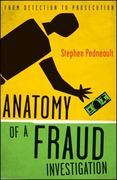please answer
Question 40 1 pts Which of the following events would cause the total amount of reserves in the banking system to increase for sure? O Employees deposit their paychecks in their bank deposit accounts at the end of the month. O Banks lend large amounts of money to households. O Banks lend large amounts of money to other banks. O The Fed reduces the interest rate it pays on reserves. O The Fed reduces the discount rate. O The Fed conducts an open market purchase. O The Fed conducts an open market sale. Question 38 1 pts A 30-year coupon bond is selling for $9,000 today. It promises annual coupons of $1,000 and a final payment of $10,000. What is the yield to maturity (YTM) of this bond? O a. YTM - 10 percent O b. YTM > 10 percent O G. YTM . 10 percent O d. There is not enough information to calculate the yield to maturity. O e. I have no clue how to calculate the yield to maturity of this bond. Question 39 1 pts What is the present value (PV) today of $500,000 that you will receive after 20 years if the discount rate is 25 percent? [Choose the number closest to the correct answer). O a. PV - $124,500 O b. PV - $12400 O c. PV - $10,120 O d. PV - $5,765 O e. PV - $2.250 Question 36 1 pts Which of the following statements is not consistent with the empirical facts about the U.S. yield curves? O a. Interest rates on bonds of different maturities generally move together. O b. When short-term interest rates are low, the yield curves are likely upward sloping. O c. When short-term interest rates are high, the yield curves are downward sloping. O d. When short-term interest rates are low, the yield curves are likely inverted, O e. Most of the time the yield curves are upward sloping. Question 37 1 pts According to the Fisher Effect, if people expect the inflation rate to go down by 2 percent, O a. Demand for bonds will increase and supply of bonds will decrease leading to a higher nominal interest rate. O b. Demand for bonds will increase and supply of bonds will decrease leading to a higher ex-ante real interest rate. O c. Demand for bonds will increase and supply of bonds will decrease leaving the ex-ante real interest rate unchanged. d. Demand for bonds will increase and supply of bonds will decrease leading to a lower ex-ante real interest rate. O e. Demand for bonds will decrease and supply of bonds will increase leaving the ex-ante real interest rate unchanged







